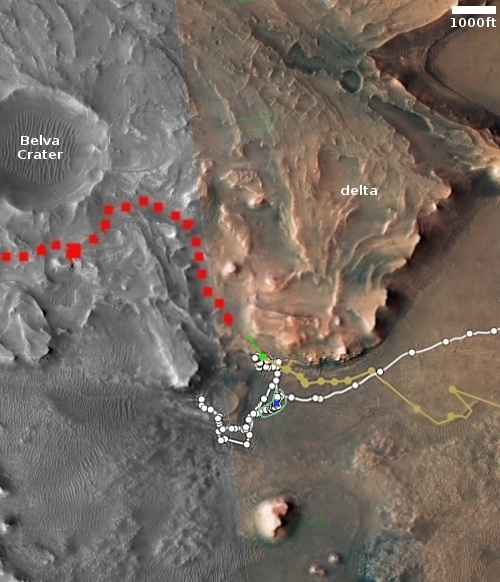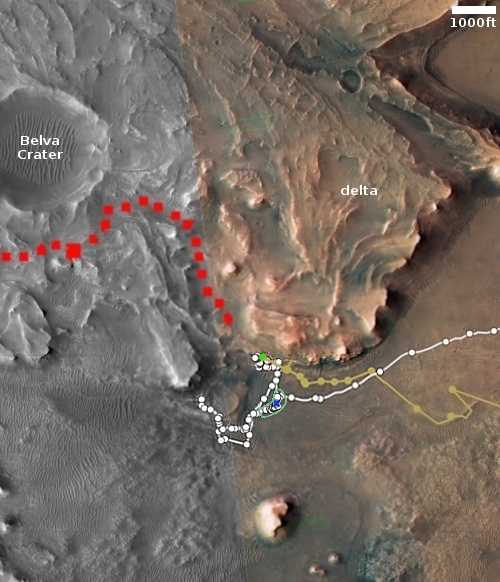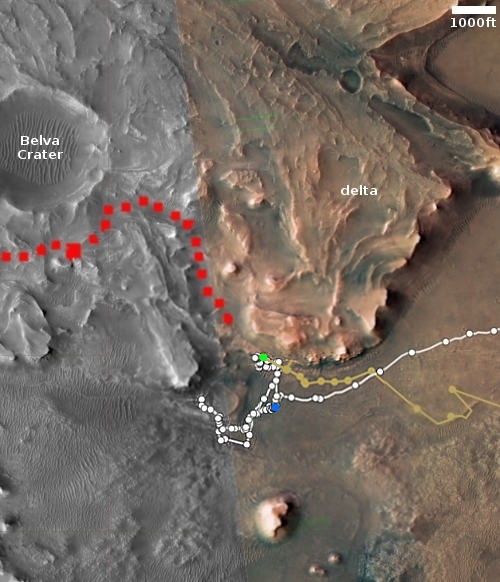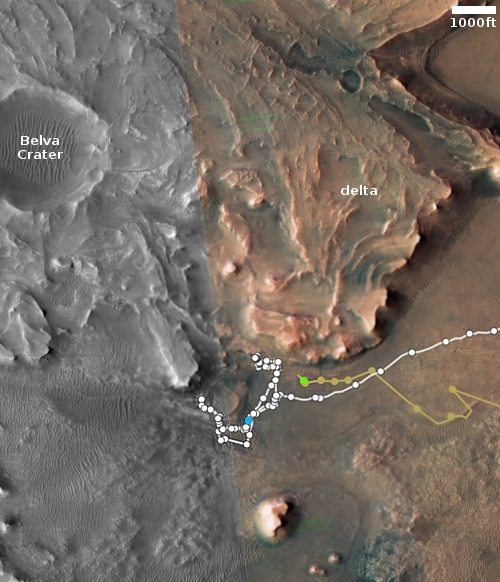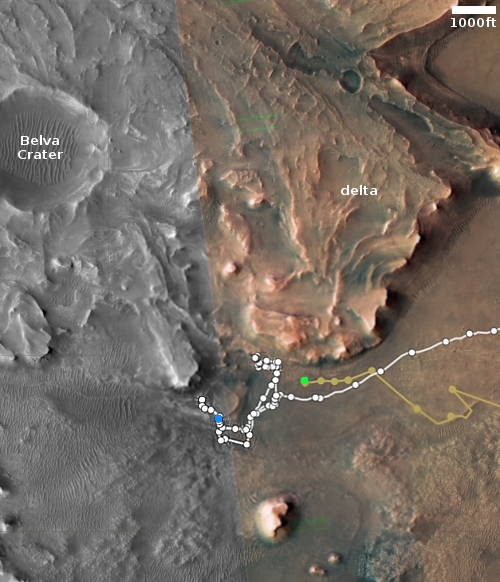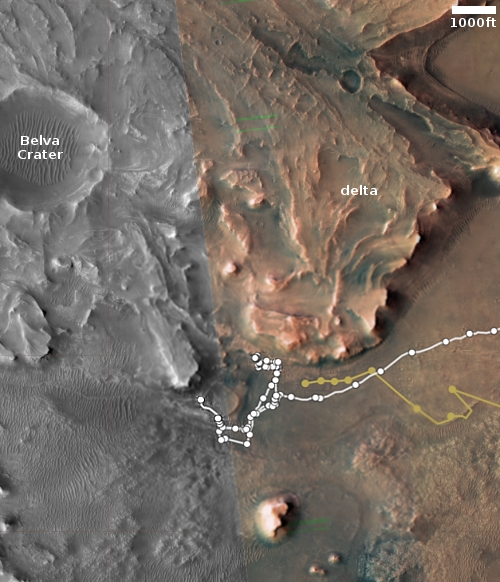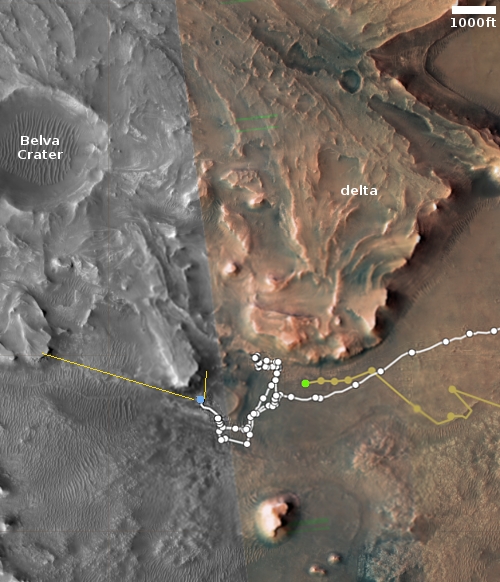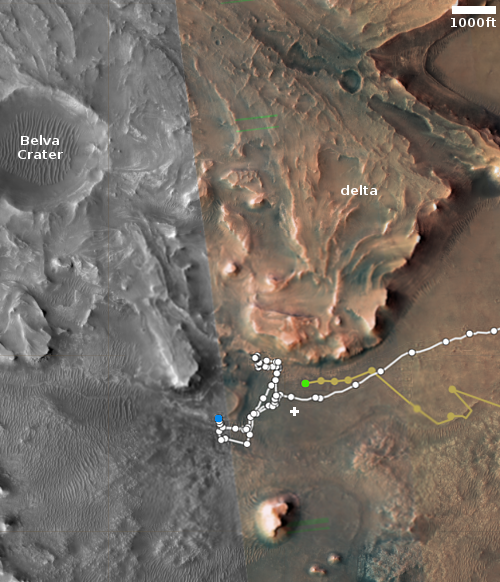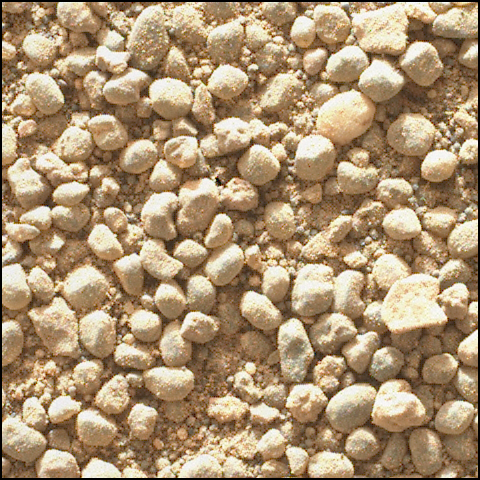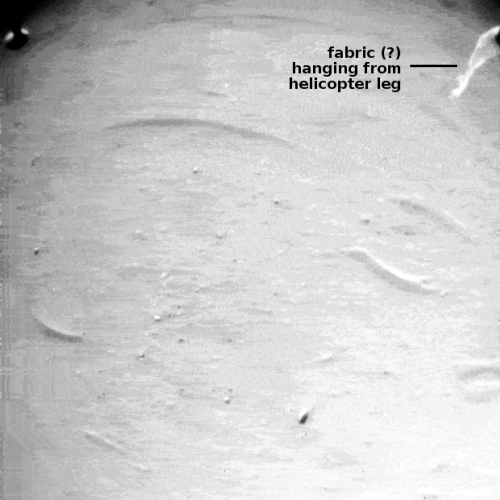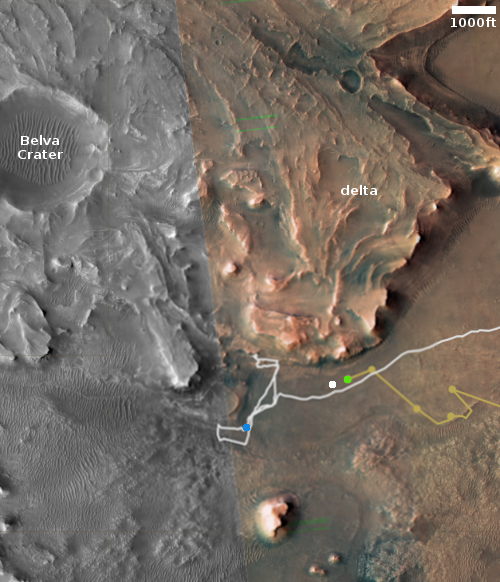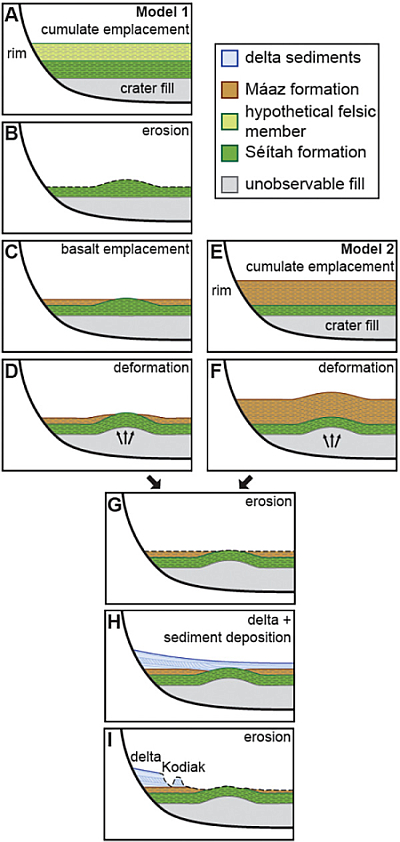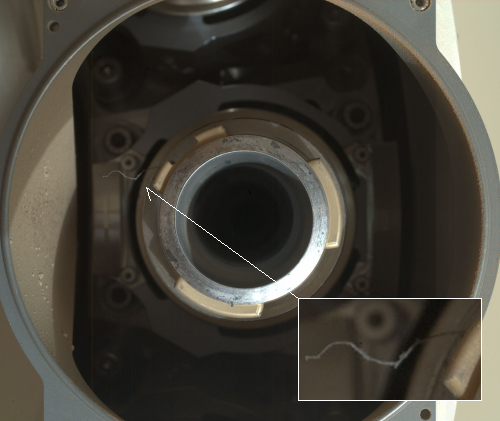Ingenuity successfully completes 41st flight
On January 27, 2023, the Mars helicopter Ingenuity successfully completed its 41st flight, flying about 600 feet total in an out-and-back flight that took 109 seconds, slightly longer in length and time than originally planned.
You can watch a very short animation from a handful of the pictures taken during the flight at the first link above. The green dot on the overview map to the right marks Ingenuity’s position before and after the flight, the blue dot Perseverance’s present location. The green line indicates the flight’s approximate path, designed to scout the route that Perseverance intends to follow, as indicated by the red dotted line. The actual flight path has not yet been published. I will add it to this map when the Ingenuity science team provides it.
Expect the next flight to duplicate this one, except it will likely not return but land somewhere out ahead.
On January 27, 2023, the Mars helicopter Ingenuity successfully completed its 41st flight, flying about 600 feet total in an out-and-back flight that took 109 seconds, slightly longer in length and time than originally planned.
You can watch a very short animation from a handful of the pictures taken during the flight at the first link above. The green dot on the overview map to the right marks Ingenuity’s position before and after the flight, the blue dot Perseverance’s present location. The green line indicates the flight’s approximate path, designed to scout the route that Perseverance intends to follow, as indicated by the red dotted line. The actual flight path has not yet been published. I will add it to this map when the Ingenuity science team provides it.
Expect the next flight to duplicate this one, except it will likely not return but land somewhere out ahead.

